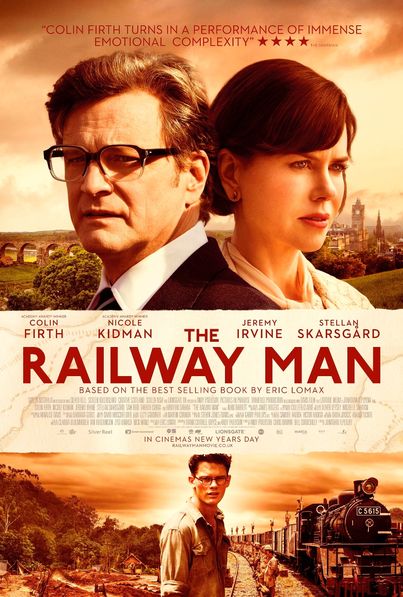The Railway Man (2013)

“The Railway Man”: A Profound Journey of Healing Directed by Jonathan Teplitzky
Suggested videos for you:
Released in 2013, “The Railway Man” is a poignant war drama directed by Jonathan Teplitzky, based on the memoir of the same name by Eric Lomax. The film stars Colin Firth as Lomax, alongside Nicole Kidman and Jeremy Irons, and explores themes of trauma, forgiveness, and the enduring impact of war. With its sensitive portrayal of post-war psychological struggles and the quest for redemption, “The Railway Man” offers a powerful narrative that resonates deeply with audiences.

Set against the backdrop of World War II, the film chronicles the harrowing experiences of Eric Lomax, a British soldier captured by the Japanese during the fall of Singapore. As a prisoner of war, Lomax is subjected to brutal treatment, forced labor, and psychological torture while building the infamous Burma Railway. The film alternates between Lomax’s traumatic past and his attempts to rebuild his life in post-war Britain, where he struggles with the memories of his captivity. His life takes a turn when he meets and marries Patti (Nicole Kidman), who supports him as he confronts his past and seeks closure. The narrative reaches a critical juncture when Lomax discovers that one of his former captors, Takashi Nagase (played by Hiroyuki Sanada), is still alive, leading him on a journey toward confrontation and forgiveness.

Jonathan Teplitzky’s direction is marked by a deep sensitivity to the emotional weight of Lomax’s story. He skillfully balances the intense flashbacks of Lomax’s wartime experiences with his present-day struggles, creating a powerful contrast that highlights the lasting effects of trauma. The cinematography by Peter Biziou captures both the stark brutality of war and the beauty of the natural landscapes in which Lomax attempts to heal. Teplitzky’s use of sound design and score also enhances the emotional impact, immersing viewers in the characters’ psychological journeys.

“The Railway Man” is primarily classified as a war drama, but it also incorporates elements of biographical film and psychological exploration. The film delves into themes of suffering, resilience, and the complexities of forgiveness. It emphasizes the idea that healing is not only a personal journey but also involves confronting the past and finding a way to move forward. Lomax’s struggle to reconcile his experiences with his desire for peace serves as a testament to the human spirit’s capacity for endurance and redemption.

Colin Firth delivers a compelling performance as Eric Lomax, capturing the character’s inner turmoil and vulnerability. His portrayal conveys the depth of Lomax’s pain while also highlighting his strength as he seeks to reclaim his life. Nicole Kidman shines as Patti, bringing warmth and compassion to her role as Lomax’s supportive partner. Jeremy Irons delivers a notable performance as the older Nagase, embodying the complexity of a man shaped by the realities of war and his own regrets. The chemistry between Firth and Kidman adds emotional depth to the narrative, illustrating the power of love and understanding in the face of trauma.
Upon its release, “The Railway Man” received generally positive reviews from critics, who praised its sensitive storytelling, performances, and historical significance. The film was recognized for its exploration of the psychological scars left by war and the importance of forgiveness in overcoming the past. While some viewers found the pacing slow, many appreciated the film’s emotional depth and its respectful handling of difficult subject matter.
In conclusion, “The Railway Man” is a profoundly moving film that explores the lasting impact of war on the human psyche. Directed by Jonathan Teplitzky, the film artfully combines drama, biography, and psychological exploration, inviting audiences to reflect on themes of trauma, forgiveness, and healing. Through Eric Lomax’s journey, “The Railway Man” serves as a powerful reminder of the resilience of the human spirit and the transformative power of love and understanding. Its poignant narrative and strong performances ensure that it remains a significant work, resonating with viewers long after the credits roll.











